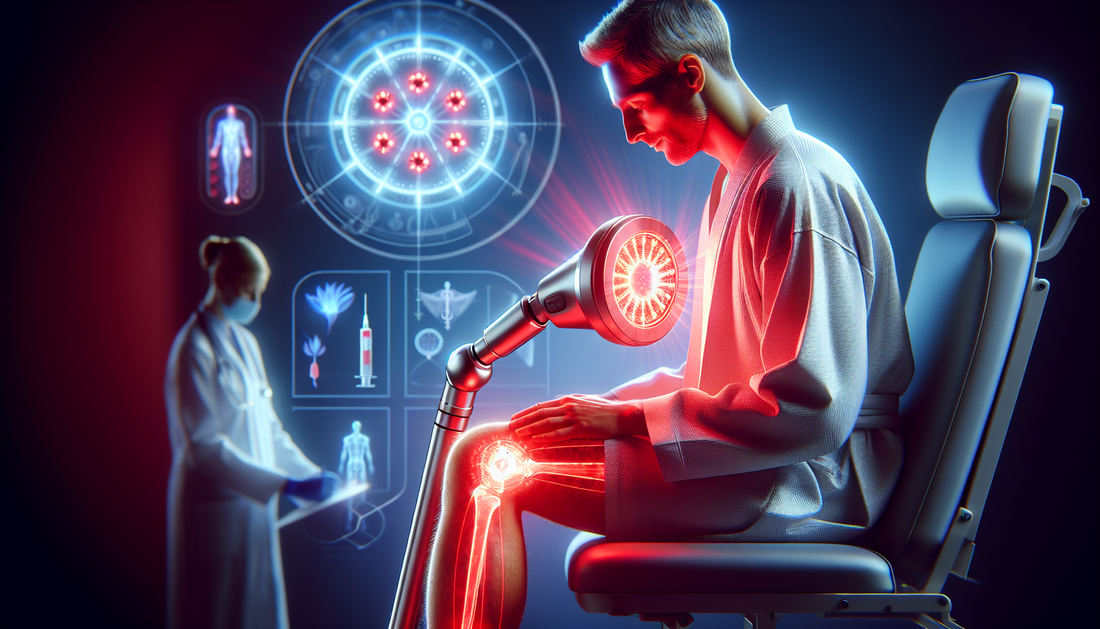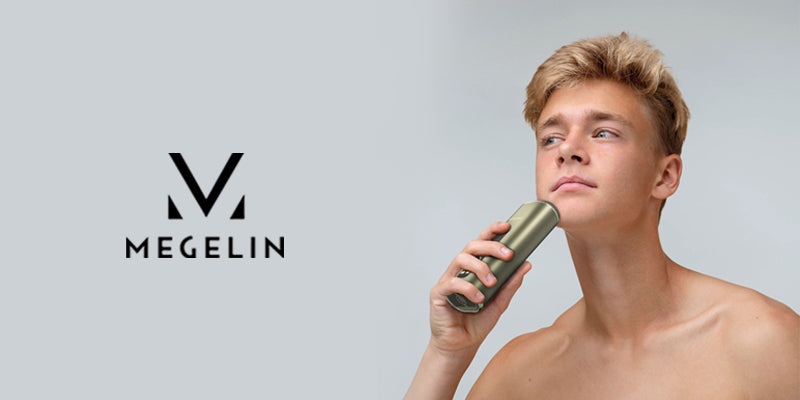
Red Light Therapy for Pain|The 2024 Newest Research
megelinbeautyRed light therapy (RLT) has emerged as a promising non-invasive option for managing chronic, back, joint, and neuropathic pain. Studies show RLT not only provides pain relief but also enhances muscle recovery, and wound healing, and reduces inflammation. The proliferation of FDA-approved devices highlights its safety and effectiveness. This article explains RLT, its pain-relief mechanisms, benefits, efficacy for conditions like arthritis and knee pain, and safe home use. Understanding RLT is crucial for improving the quality of life for those affected by pain worldwide.
What is Red Light Therapy?
Red Light Therapy (RLT), also known by various names such as Low-level Laser Light Therapy, Non-thermal LED light, and Photobiomodulation, involves the use of low-level wavelengths of red light to treat various conditions. This therapeutic technique is recognized for its non-invasive nature and ability to address skin issues, promote wound healing, and alleviate pain without generating heat [1][2].
Definition and Key Principles
RLT operates on the principle that certain wavelengths of light can trigger biological processes in the body. When exposed to red and near-infrared light, cells absorb this light energy, which is believed to enhance their performance and repair mechanisms. Specifically, this exposure is thought to strengthen the mitochondria, the powerhouses of the cells, thereby increasing the production of adenosine triphosphate (ATP), enhancing cellular function and energy [2][3].
History and Development
The exploration of light therapy began with NASA's experiments on plant growth in space, leading to applications for wound healing in astronauts. The historical journey of RLT dates back even further, with pivotal developments such as the invention of the light bulb by Thomas Edison and the theoretical groundwork for lasers laid by Albert Einstein. These advancements set the stage for the modern use of light in medical treatments [1]
Modern Applications
Today, RLT is widely used in medical settings, wellness clinics, and home environments, employing devices ranging from LEDs to lasers. Its applications extend beyond skin rejuvenation to include muscle recovery, pain management, and inflammation reduction. Medical research supports its use in photodynamic therapy for treating cancer and other serious conditions, highlighting its broad therapeutic potential [1][2].
This therapy's versatility and efficacy continue to make it a subject of extensive research and a popular option in therapeutic and cosmetic treatments worldwide.
How Red Light Therapy Works to Relieve Pain
Mechanism of Action
Red Light Therapy (RLT) operates by emitting wavelengths of red to near-infrared light, which are absorbed by the skin and underlying tissues. This absorption stimulates the mitochondria within cells, enhancing their ability to produce adenosine triphosphate (ATP), the energy currency of the cell. The increase in ATP production facilitates cellular repair and regeneration, which are crucial in alleviating pain and enhancing tissue healing [5][6][7].
Biological Processes Involved
The primary biological mechanism of RLT involves the stimulation of cytochrome c oxidase, a key enzyme in the mitochondrial electron transport chain. This stimulation leads to increased electron transfer and ATP synthesis, which significantly impacts cellular metabolism and energy levels [6]. Additionally, RLT induces a shift in the cell's redox state, promoting oxidative reactions that can activate various cellular signaling pathways. These pathways play pivotal roles in reducing inflammation, one of the primary sources of pain in many conditions [6][7].
Scientific Evidence Supporting Pain Relief
Several studies underscore the effectiveness of RLT in pain management. For instance, specific wavelengths of red light have been shown to reduce inflammation markers such as TNF-α, IL-1β, and IL-6 in various clinical settings, including post-surgical pain and chronic joint disorders [5][7]. Research also indicates that RLT can modulate pain receptors and inflammatory mediators at the cellular level, leading to decreased perception of pain [5][7]. Moreover, clinical trials have demonstrated that RLT can alleviate pain from neuropathic conditions and osteoarthritis by directly affecting the nociceptors and dorsal root ganglia, crucial components of the pain transmission pathway [5][7].
These findings collectively highlight the dual role of RLT in both direct pain alleviation and underlying biological modulation, offering a potent, non-invasive tool for pain management.
Benefits of Red Light Therapy for Pain Management
Pain Reduction
Red light therapy has demonstrated significant potential in reducing pain, particularly for conditions associated with inflammation such as arthritis and exercise-induced joint pain [8]. Studies have shown that this therapy can decrease the perception of pain by modulating pain receptors and inflammatory mediators at the cellular level [5][7]. Additionally, red light therapy may offer short-term relief for morning stiffness and pain in patients with rheumatoid arthritis, providing a non-invasive alternative to traditional pain management strategies [9].
Inflammation Control
One of the most notable benefits of red light therapy is its ability to control and reduce inflammation, a common cause of pain and discomfort in various medical conditions. The therapy works by increasing blood flow to the affected tissues, which in turn helps in reducing inflammation [10]. Clinical trials have consistently found that red light therapy can enhance the body's antioxidant defenses, further aiding in inflammation reduction [10]. This aspect of the therapy is crucial for treating chronic conditions like arthritis, where inflammation plays a significant role [11].
Enhanced Recovery
Red light therapy accelerates the recovery process by improving mitochondrial function in cells, which enhances their energy production capabilities [12]. This increase in cellular energy allows for faster regeneration of damaged tissues. Athletes, in particular, benefit from reduced recovery times and improved muscle repair after injuries, with studies noting a significant reduction in return to play times when using this therapy [12]. Moreover, the therapy's ability to increase collagen synthesis and stimulate important cells like fibroblasts and keratinocytes promotes quicker wound healing and tissue repair [13].
By leveraging these mechanisms, red light therapy serves as a versatile tool in pain management, enhancing both the speed and quality of recovery from various physical ailments.
How to Use Red Light Therapy Safely
Choosing the Right Device
When selecting a red light therapy device, it's crucial to consider FDA approval and the specific wavelengths it emits. Devices approved by the FDA are tested for safety and efficacy, ensuring they meet strict guidelines. The ideal wavelength for pain management typically ranges between 600 to 1000 nanometers. Devices that offer adjustable settings can be particularly beneficial, allowing users to tailor the therapy to their specific needs.
Guidelines for Use
To use red light therapy safely at home, follow these steps:
- Read the Manufacturer’s Instructions: Before using any red light therapy device, thoroughly read and understand the manufacturer's guidelines.
- Test for Sensitivity: Perform a patch test to ensure no adverse reactions occur. Apply the light to a small area of skin for a few minutes and wait for any signs of irritation.
- Use at the Recommended Distance: Position the device at the recommended distance from your skin, usually a few inches, to prevent overheating and ensure maximum efficacy.
- Adhere to Time Limits: Limit exposure to the recommended duration, typically between 5 to 20 minutes per session, to avoid overuse which can diminish the benefits.
Precautions and Potential Side Effects
While red light therapy is generally safe, it's important to be aware of potential side effects:
- Skin Irritation: Some individuals may experience temporary redness or irritation. Discontinue use if symptoms persist.
- Eye Safety: Never look directly into the light source. Using safety goggles can help protect your eyes during facial treatments.
- Photosensitivity: People with photosensitivity should consult a healthcare provider before starting treatment, as red light therapy might exacerbate their condition.
By adhering to these guidelines and understanding the potential side effects, users can safely incorporate red light therapy into their pain management regimen, potentially enhancing their quality of life through non-invasive means.
Conclusion
Red light therapy (RLT) shows great promise in pain management and recovery. It effectively reduces pain, controls inflammation, and accelerates healing without being invasive. By activating cellular processes and enhancing mitochondrial function, RLT improves pain perception and tissue recovery. Supported by rigorous research and anecdotal evidence, RLT is a non-invasive, accessible treatment that can significantly improve quality of life. For best results, users should follow safety guidelines and consult healthcare professionals. RLT's potential in advanced, humane pain management is evident.
FAQs
1. Is red light therapy effective in managing pain?
Research indicates that red light therapy can be beneficial in alleviating certain types of pain, especially those associated with inflammation, which involves irritation and swelling of body tissues.
2. How quickly can red light therapy start reducing inflammation?
Red light therapy begins to benefit the body from the very first session. Although some minor effects might be noticeable immediately, the most significant results generally require consistent treatments over a period of 3 to 6 months.
3. Is it possible to use red light therapy too much?
For most individuals, it is not possible to overuse red light therapy. It is safe to use daily, non-invasive, and typically comes with no significant risks or side effects. However, if unusual results are observed, it is advisable to halt the treatment and consult a physician.
References
[1] - https://my.clevelandclinic.org/health/articles/22114-red-light-therapy
[2] - https://www.healthline.com/health/red-light-therapy
[3] - https://lightwavetherapy.com/learn/lightwave-therapy-principles/
[4] - https://www.theralight.com/theralight-blog/a-brief-history-of-red-light-therapy
[5] - https://www.ncbi.nlm.nih.gov/pmc/articles/PMC8277709/
[6] - https://www.ncbi.nlm.nih.gov/pmc/articles/PMC4291815/
[7] - https://www.ncbi.nlm.nih.gov/pmc/articles/PMC9980499/
[8] - https://cityfitnessphilly.com/step-up-your-recovery-with-the-power-of-red-light-therapy/
[9] - https://www.webmd.com/skin-problems-and-treatments/red-light-therapy
[10] - https://www.degreewellness.com/2019/10/treating-inflammation-and-pain-with-red-and-near-infrared-light-therapy/
[11] - https://motusspt.com/red-light-therapy-for-inflammation-and-pain/
[12] - https://ledtechnologies.com/blog/recovering-body-athletes-guide-light-therapy/
[13] - https://www.ncbi.nlm.nih.gov/pmc/articles/PMC3926176/











